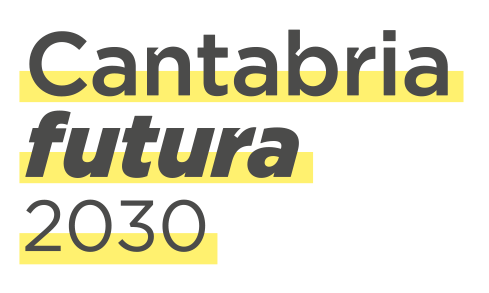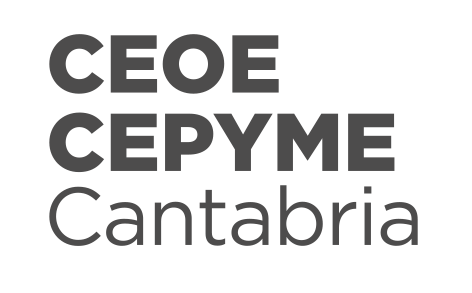Hold on—before you click a boosted price, here’s a quick, usable rule: compare the boosted implied probability to the fair implied probability and translate the difference into expected-value (EV) per dollar staked. Most novices miss that step and treat an odds boost like “free value,” which it rarely is. In plain terms: if a bookmaker or promo offers a boost from 2.00 to 2.20, convert both to implied probabilities (1/2.00 = 50%; 1/2.20 ≈ 45.45%) and measure the delta; that delta shows how much softer the market would need to be to make the boost a true edge. Read these numbers aloud—if the boost only trims 4–5% of implied probability on a market where your model says the edge is 1–2%, the boost can matter; if your model says the market edge is already negative by 10%, the boost won’t fix it. Follow this practice and you’ll stop throwing away bankroll on “feel-good” promotions that look generous but hide a negative EV.
Wow! This next paragraph gives a compact calculator you can use immediately: EV change = stake × (P_boosted − P_market), where P = your assessed true win probability, and P_boosted is the boosted implied probability from the offer. If you don’t have a detailed model, substitute a conservative market-implied probability adjusted for the house edge or vig (for many markets, trim 2–4% from the raw implied probability as a sanity check). Multiply the delta by stake to see expected value in currency terms; if you play many small bets the cumulative EV matters, but if your stake is tiny relative to buy-in or time, ignore it—life’s too short for theoretical pennies. For beginners: write down P_market and P_boosted on a sticky note before every boosted bet until it becomes reflexive; this simple habit cuts impulsive chasing and clarifies whether a boost is a genuine play or just marketing noise.

What an Odds Boost Really Changes
Here’s the thing. An odds boost changes only the payout, not the underlying probability of the event, unless the promoter alters the market itself. That means your decision logic remains the same: is your assessed chance of winning higher than the implied probability after the boost? If yes, the play can be +EV; if no, it’s entertainment. Many boosts add complexity with tiers, capped returns, or max-stake limits, and those constraints often chip away at theoretical value faster than you notice. Practically, always check the max stake and any “max payout” clause—those terms convert a mathematically attractive boost into a capped or even negative proposition. Long story short: read the fine print and run the numbers, because promotions are engineered to steer volume, not to hand out profits.
Quick Math Primer (Mini-Formulas)
Hold on—that micro-calculator below is what I use before a boosted bet.
- Convert odds to implied probability: P = 1 / decimal_odds.
- Find the difference: ΔP = P_boosted − P_market.
- Expected Value change: EV_change = stake × ΔP.
- Relative ROI for the bet: ROI = EV_change / stake = ΔP (as a % of stake).
- Adjust for fees/caps: if there’s a max payout M, EV_effective = min(expected_return, M) − stake.
Wow! If you do those five quick steps mentally, you’ll instantly see whether a boost moves the needle. Use a spreadsheet or simple phone calculator to repeat these steps quickly during live promos.
Types of Odds Boosts and Practical Value
Hold on—not all boosts are created equal. There are broadly three shapes: single-event boosts (one match or market), multi-leg boosts (parlays built by the operator), and enhanced markets (e.g., extra goals or special props). Each has different math and psychology behind it. Single-event boosts are easiest to value because the payout change applies to a single chance; multi-leg boosts look huge in percentage terms but are often worthless unless your true probability model is very confident on every leg. Enhanced props often increase variance—some give a small EV lift with manageable variance, others are hyper-volatile and feel “fun” rather than profitable. Practically, prioritise single-event boosts where you have a model advantage, then consider selected props where your niche knowledge beats the market.
Comparison Table: Approaches to Using Odds Boosts
| Approach | Best For | Pros | Cons | When to Use |
|---|---|---|---|---|
| Strict EV-first | Model-based bettors | Maximises long-term profitability | Requires data and discipline | When you have historical edge ≥2% |
| Casual value chase | Recreational punters | Enjoyment with lower time investment | Often negative EV masked by excitement | Small stakes; for fun only |
| Promotional liquidity play | Bonus hunters | Can extract tiny edges across many promos | Time-consuming; capped limits | When operator caps are high enough |
| Parlay exploitation | Those with eclectic niche markets | Large headline boosts possible | High variance; often illusory value | Only if you can estimate low correlation between legs |
How to Evaluate an Offer — Step-by-Step (Practical Checklist)
Hold on—here’s a short, repeatable decision flow that takes less than two minutes and prevents impulsive mistakes.
- Read the T&Cs: check max stake, cap, expiry, restricted markets.
- Compute P_boosted and P_market (or use your model probability).
- Calculate ΔP and EV_change for your intended stake.
- Consider correlation and variance if it’s a multi-leg or prop play.
- Decide: reject if EV_change is negative after caps; accept if EV_change is positive and fits bankroll rules.
Wow! If you run that checklist every time you see a boost, you’ll quickly separate marketing from math.
Realistic Case Examples
Hold on—two short, original mini-cases that show how the math works in practice.
Case A — Single-match boost: a soccer match has market odds 2.50 (P_market = 40%). The operator boosts to 3.00 (P_boosted ≈ 33.33%). Your model gives a 42% true probability. ΔP = 0.42 − 0.3333 = 0.0867. For a $50 stake, EV_change ≈ $4.335. That’s roughly an 8.67% ROI on stake and a sensible positive EV if your model is reliable. Don’t forget to check max payout caps—if max payout is $30 you lose value.
Case B — Parlay boost: a three-leg parlay normally pays 6.0, operator boosts to 9.0. Your assessed true probabilities yield expected parlay probability 18%. Normal implied probability = 1/6.0 = 16.67%; boosted implied = 1/9.0 ≈ 11.11%. The delta looks attractive superficially, but the parlay is only +EV if you’re confident in each leg independently and the site doesn’t restrict stake or void certain markets. In most recreational uses, the boost increases variance but not consistent profitability.
Where to Find the Best Practical Value (and a Helpful Resource)
Hold on—value often hides in small markets where the operator misprices less-followed props, or where your local knowledge trumps the global book. For Aussie players, niche domestic leagues and small tournament props are classic zones where sensible odds boosts can become profitable if you have the edge. Also, look for boosts tied to loyalty/tiered programs where your effective max stake is higher due to VIP limits—these reduce the impact of caps and make EV more realizable. For casual players who want to explore a reliable, user-friendly platform that showcases regular promos without the scamming red flags, check reviews and platform reputations carefully; one place I’ve referenced for social gameplay and reliable app behaviour is visit site, which lists details about in-app bonus mechanics and loyalty program structures that are useful background when comparing offers. Remember: the platform’s trustworthiness matters as much as the boost headline.
Choosing Tools and Approaches — Comparison (Short)
Hold on—here’s a compact comparison to help you pick a workflow.
| Tool/Approach | Skill Required | Speed | Realistic EV Potential |
|---|---|---|---|
| Excel/Sheets calculator | Low | Fast | Moderate |
| Custom model (python/R) | High | Slow initially, fast later | High |
| Manual social-media scouting | Low | Varies | Low–Moderate |
| Aggregation tools / odds feeds | Medium | Fast | Moderate–High |
Wow! If you’re testing a new workflow, start with a simple spreadsheet and the checklist above—then graduate to data feeds or a lightweight model once you find where your edge lives. Another useful practice: track every boosted bet in a simple journal noting stake, EV_change estimate, and outcome; after 100 bets, reassess whether your approach is producing the expected variance and long-term drift versus model predictions. For more reading on platform-level promos and loyalty structures that interact with boosts, a good place to cross-check is an operator’s bonus and terms pages; one example of a clear, user-focused write-up you might consult is at visit site, which lays out promotional mechanics in plain language that suits beginners evaluating offers.
Quick Checklist
- Check max stake and max payout before considering any boost.
- Compute P_market and P_boosted; write them down.
- Calculate EV_change and confirm it exceeds transaction costs or time value.
- Avoid multi-leg boosts unless you can model correlations.
- Track results for 50–100 bets and update your heuristics.
Common Mistakes and How to Avoid Them
Hold on—these are the traps I see players fall into repeatedly.
- Ignoring caps: headline numbers evaporate with low max payouts.
- Chasing streaks: boosted bets feel like a comeback tool; they’re not.
- Overrating operator generosity: many boosts are marketing with very limited EV.
- Failing to account for correlation in parlays: legs are rarely independent.
- Neglecting bankroll sizing: even +EV plays can bankrupt you with bad variance if stakes are misjudged.
To avoid these, use the step-by-step checklist above and apply strict stake-sizing rules—never risk more than 1–2% of your bankroll on a single boosted play unless you’re deliberately in a high-variance, entertainment-driven phase.
Mini-FAQ
Q: Are odds boosts ever guaranteed +EV?
A: No, never guaranteed. They can increase EV relative to the unboosted market, but only if your assessed probability exceeds the boosted implied probability and you can realise the wager within caps and T&Cs. Always do the math.
Q: Should I treat parlay boosts differently?
A: Yes. Parlay boosts magnify headline returns but also amplify correlation and variance. Only use them when you have independent confidence in each leg and clear understanding of max-stake and voiding rules.
Q: How do I factor loyalty status into boost value?
A: Higher VIP tiers often raise max-stake or remove caps, making the same boost more usable for extracting EV. Factor potential lifetime value (higher limits, faster customer service) into your assessment if you plan to scale.
18+ only. Gamble responsibly. Odds boosts and promotions carry terms and conditions, caps, and time limits that affect their real value. If you feel promotions are affecting your behaviour, use self-exclusion tools, deposit/purchase limits, or seek help via Gamblers Anonymous or local support services.
Sources
Operator terms and promotional pages; industry standard probability conversions and expected-value math; practical player experience and tracking logs. No external URLs are embedded here beyond cited operator references within the article body.
About the Author
Experienced online-gambling analyst and recreational bettor based in AU, with five years of practical tracking of promotional plays and a focus on practical EV methods. I write concise, hands-on guides to help beginners separate marketing from actual value while promoting responsible play and solid bankroll management.



